Risk Assessment of Debris Flow in a Mountain-Basin Area, Western China
Abstract
:1. Introduction
2. Study Area
3. Data and Methods
3.1. Data Source and Pre-Processing
3.1.1. Indicators of Hazard Assessment
- Geomorphological Conditions
- 2.
- Geological Structure
- 3.
- Surface Vegetation and Soil
- 4.
- Rain Conditions
3.1.2. Indicators for Vulnerability Assessment
- Exposure
- 2.
- Coping Capacity
- 3.
- Resilience
3.2. Risk Assessment
3.2.1. Methods of Hazard Assessment
- Ensemble Methods
- 2.
- Gaussian Processes
- 3.
- Generalized Linear Models (GLM)
- 4.
- Navies Bayes (NB)
- 5.
- Nearest Neighbours
- 6.
- Support Vector Machines (SVM)
- 7.
- Trees
- 8.
- Discriminant Analysis
- 9.
- Extreme Gradient Boosting (XGBoost)
- 10.
- Multilayer Perceptron (MLP)
3.2.2. Methods of Vulnerability Assessment
3.3. Redundancy Analysis (RDA)
4. Results
4.1. Hazard Analysis
4.1.1. Model Simulation and Optimisation
4.1.2. Results of the Hazard Assessment
4.2. Vulnerability Analysis
4.3. Risk Analysis
5. Discussion
5.1. Comparison of Evaluation Results of Different Models
5.2. Development Strategies for Key Regions of Debris Flow Disasters
6. Conclusions
Author Contributions
Funding
Acknowledgments
Conflicts of Interest
References
- Li, B.; Jenkins, C.; Xu, W. Strategic protection of landslide vulnerable mountains for biodiversity conservation under land-cover and climate change impacts. Proc. Natl. Acad. Sci. USA 2022, 119, e2113416118. [Google Scholar] [CrossRef] [PubMed]
- Zhao, Y.; Meng, X.; Qi, T.; Chen, G.; Li, Y.; Yue, D.; Qing, F. Modeling the Spatial Distribution of Debris Flows and Analysis of the Controlling Factors: A Machine Learning Approach. Remote Sens. 2021, 13, 4813. [Google Scholar] [CrossRef]
- Carrión-Mero, P.; Montalván-Burbano, N.; Morante-Carballo, F.; Quesada-Román, A.; Apolo-Masache. Worldwide Research Trends in Landslide Science. Int. J. Environ. Res. Public Health 2021, 18, 9445. [Google Scholar] [CrossRef] [PubMed]
- Quesada-Román, A.; Allesteros-Cánovas, J.; Granados-Bolaños, S.; Birkel, C.; Stoffel, M. Dendrogeomorphic reconstruction of floods in a dynamic tropical river. Geomorphology 2020, 359, 107133. [Google Scholar] [CrossRef]
- Quesada-Román, A.; Ballesteros-Cánovas, J.; Granados-Bolaños, S.; Birkel, C.; Stoffel, M. Improving regional flood risk assessment using flood frequency and dendrogeomorphic analyses in mountain catchments impacted by tropical cyclones. Geomorphology 2022, 396, 108000. [Google Scholar] [CrossRef]
- Chen, M.; Tang, C.; Zahng, X.; Xiong, J.; Chang, M.; Shi, Q.; Wang, F.; Li, M. Quantitative assessment of physical fragility of buildings to the debris flow on 20 August 2019 in the Cutou gully, Wenchuan, southwestern China. Eng. Geol. 2021, 293, 106319. [Google Scholar] [CrossRef]
- Zhao, Y.; Meng, X.; Qi, T.; Qing, F.; Xiong, M.; Li, Y.; Guo, P.; Chen, G. AI-based identification of low-frequency debris flow catchments in the Bailong River basin, China. Geomorphology 2020, 359, 107125. [Google Scholar] [CrossRef]
- Zou, Q.; Cui, P.; He, J.; Lei, Y.; Li, S. Regional risk assessment of debris flows in China-an HRU-based approach. Geomorphology 2019, 340, 84–102. [Google Scholar] [CrossRef]
- Quesada-Román, A. Flood risk index development at the municipal level in Costa Rica: A methodological framework. Environ. Sci. Policy 2022, 133, 98–106. [Google Scholar] [CrossRef]
- Lin, J.; Yang, M.; Lin, B.; Lin, P. Risk assessment of debris flows in Songhe Stream, Taiwan. Eng. Geol. 2011, 123, 100–112. [Google Scholar] [CrossRef]
- He, S.; Zhai, J. The rescue and relief plan based on the risk assessment of debris flow in Yunnan Province, China. Nat. Hazard Res. 2021, 1, 134–144. [Google Scholar] [CrossRef]
- Lin, J.; Chen, W.; Qi, X.; Hou, H. Risk assessment and its influencing factors analysis of geological hazards in typical mountain environment. J. Clean Prod. 2021, 309, 127077. [Google Scholar] [CrossRef]
- Pan, A. Study on mobility-disadvantage group’ risk perception and coping behaviors of abrupt geological hazards in coastal rural area of China. Environ. Res. 2016, 148, 574e581. [Google Scholar] [CrossRef] [PubMed]
- Fekete, A. Spatial disaster vulnerability and risk assessments: Challenges in their quality and acceptance. Nat. Hazards. 2012, 61, 1161–1178. [Google Scholar] [CrossRef]
- Hürlimann, M.; Copons, R.; Altimir, J. Detailed debris flow hazard assessment in Andorra: A multidisciplinary approach. Geomorphology 2006, 78, 359–372. [Google Scholar] [CrossRef]
- Fuchs, S.; Kaitna, R.; Scheidl, C.; Hübl, J. The application of the risk concept to debris flow hazards. Geomech. Tunn. 2008, 1, 120–129. [Google Scholar] [CrossRef]
- Mazzorana, B.; Simoni, S.; Scherer, C.; Gems, B.; Fuchs, S.; Keiler, M. A physical approach on flood risk vulnerability of buildings. Hydrol. Earth Syst. Sci. 2014, 18, 3817–3836. [Google Scholar] [CrossRef] [Green Version]
- Zou, Q.; Cui, P.; Zeng, C.; Tang, J.X.; Amar, D.R. Dynamic process-based risk assessment of debris flow on a local scale. Phys. Geogr. 2016, 37, 132–152. [Google Scholar] [CrossRef]
- Varnes, D. Landslide Hazard Zonation: A Review of Principles and Practice; UNESCO: Paris, France, 1984. [Google Scholar]
- Liu, X.; Lei, J. A method for assessing regional debris flow risk: An application in Zhaotong of Yunnan province (SW China). Geomorphology 2003, 52, 181–191. [Google Scholar] [CrossRef]
- Lee, S. Application of logistic regression model and its validation for landslide susceptibility mapping using GIS and remote sensing data. Int. J. Remote Sens. 2005, 26, 1477–1491. [Google Scholar] [CrossRef]
- Liang, W.; Zhuang, D.; Dong, J.; Pan, J.; Ren, H. Assessment of debris flow hazards using a Bayesian Network. Geomorphology 2012, 171, 94–100. [Google Scholar] [CrossRef]
- Hewitt, K. Catastrophic landslides and their effects on the Upper Indus streams, Karakoram Himalaya, northern Pakistan. Geomorphology 1998, 26, 47–80. [Google Scholar] [CrossRef]
- Guzzetti, F. Landslide fatalities and the evaluation of landslide risk in Italy. Eng. Geol. 2000, 58, 89–107. [Google Scholar] [CrossRef]
- Mousavi, S.; Kavian, A.; Soleimani, K.; Mousavi, S.; Shirzadi, A. GIS-based spatial prediction of landslide susceptibility using logistic regression model. Geomat. Nat. Hazards Risk. 2011, 2, 33–50. [Google Scholar] [CrossRef] [Green Version]
- Liu, J.; Masona, P.; Clerici, N.; Chen, S.; Davis, A.; Miao, F.; Deng, H.; Liang, L. Landslide hazard assessment in the Three Gorges area of the Yangtze river using ASTERimagery: Zigui–Badong. Geomorphology 2004, 6, 171–187. [Google Scholar] [CrossRef]
- Lee, S.; Choi, J. Landslide susceptibility mapping using GIS and the weight-ofevidence model. Int. J. Geogr. Inf. Sci. 2004, 18, 789–814. [Google Scholar] [CrossRef]
- Li, L.; Wang, J.; Wang, C. Typhoon insurance pricing with spatial decision support tools. Int. J. Geogr. Inf. Sci. 2005, 19, 363–384. [Google Scholar] [CrossRef]
- Chen, C.; Ke, C.; Wang, C. A back-propagation network for the assessment of susceptibility to rock slope failure in the eastern portion of the Southern CrossIsland Highway in Taiwan. Eng. Geol. 2008, 57, 723–733. [Google Scholar] [CrossRef]
- Lu, G.; Chiu, L.; Wong, D. Vulnerability assessment of rainfall-induced debris flows in Taiwan. Nat. Hazards 2007, 43, 223–244. [Google Scholar] [CrossRef]
- Wan, S.; Lei, T.C. A knowledge-based decision support system to analyze the debris-flow problems at Chen-Yu-Lan River, Taiwan. Knowl.-Based Syst. 2009, 22, 580–588. [Google Scholar] [CrossRef]
- Yao, X.; Tham, L.; Dai, F. Landslide susceptibility mapping based on support vector machine: A case study on natural slopes of Hong Kong, China. Geomorphology 2008, 101, 572–582. [Google Scholar] [CrossRef]
- Saito, H.; Nakayama, D.; Matsuyama, H. Comparison of landslide susceptibility based on a decision-tree model and actual landslide occurrence: The Akaishi Mountains, Japan. Geomorphology 2009, 109, 108–121. [Google Scholar] [CrossRef]
- Lucchese, L.; Oliveira, G.; Pedrollo, O. Investigation of the influence of nonoccurrence sampling on landslide susceptibility assessment using Artificial Neural Networks. Catena 2021, 198, 105067. [Google Scholar] [CrossRef]
- IPCC. Managing the Risks of Extreme Events and Disasters to Advance Climate Change Adaptation a Special Report of Working Groups and II of the Intergovernmental Panel on Climate Change; Cambridge University Press: Cambridge, MA, USA, 2012.
- Kron, W. Flood risk = hazard • values • vulnerability. Water Int. 2005, 30, 58–68. [Google Scholar] [CrossRef]
- Gao, Z.; Ding, M.; Huang, T.; Hu, X. Geohazard vulnerability assessment in Qiaojia seismic zones, SW China. Int. J. Disaster Risk Reduct. 2021, 52, 101928. [Google Scholar] [CrossRef]
- Malone, E.; Engle, N. Evaluating regional vulnerability to climate change:purposes and methods. Wiley Interdiscip Rev. Clim. Chang. 2011, 2, 462–474. [Google Scholar] [CrossRef]
- Puissant, A.; Eeckhaut, M.; Malet, J.; Maquaire, O. Landslide consequence analysis: A region-scale indicator-based methodology. Landslides 2014, 11, 843–858. [Google Scholar] [CrossRef]
- Cui, P.; Zou, Q.; Xiang, L.; Zeng, C. Risk assessment of simultaneous debris flows in mountain townships. Prog. Phys. Geogr. 2013, 37, 516–542. [Google Scholar] [CrossRef]
- Papathoma-Köhle, M.; Kappes, M.; Keiler, M.; Glade, T. Physical vulnerability assessment for alpine hazards: State of the art and future needs. Nat. Hazards 2011, 58, 645–680. [Google Scholar] [CrossRef]
- Galli, M.; Guzzetti, F. Landslide vulnerability criteria: A case study from Umbria, Central Italy. Environ. Manag. 2007, 40, 649–664. [Google Scholar] [CrossRef]
- Ding, M.; Heiser, M.; Hübl, J.; Fuchs, S. Regional vulnerability assessment for debris flows in China—A CWS approach. Landslides 2016, 13, 537–550. [Google Scholar] [CrossRef]
- Yu, B.; Yang, Y.; Su, Y.; Huang, W.; Wang, G. Research on the giant debris flow hazards in Zhouqu county, Gansu province on 7 August 2010. J. Eng. Geol. 2010, 18, 1138–1144. [Google Scholar]
- Tang, C.; van Asch, T.W.J.; Chang, M.; Chen, G.Q.; Zhao, X.H.; Huang, X.C. Catastrophic debris flows on 13 August 2010 in the Qingping area, southwestern China: The combined effects of a strong earthquake and subsequent rainstorms. Geomorphology 2012, 139, 559–576. [Google Scholar] [CrossRef]
- Tang, C.; Rengers, N.; Van Asch, T.; Yang, Y. Triggering conditions and depositional characteristics of a disastrous debris flow event in Zhouqu city, Gansu province, northwestern China. Nat. Hazards Earth Syst. Sci. 2011, 11, 2903–2912. [Google Scholar] [CrossRef] [Green Version]
- Ouyang, C.; Wang, Z.; An, H.; Liu, X.; Wang, D. An example of a hazard and risk assessment for debris flows—A case study of Niwan Gully, Wudu, China. Eng. Geol. 2019, 263, 105351. [Google Scholar] [CrossRef]
- Zhang, Y.; Meng, X.; Jordan, C.; Novellino, A.; Dijkstra, T.; Chen, G. Investigating slow-moving landslides in the Zhouqu region of China using InSAR time series. Landslides 2018, 15, 1299–1315. [Google Scholar] [CrossRef]
- Xiong, M.; Meng, X.; Wang, S.; Guo, P.; Li, Y.; Chen, G.; Qing, F.; Cui, Z.; Zhao, Y. Effectiveness of debris flow mitigation strategies in mountainous regions. Prog. Phys. Geogr. 2016, 40, 768–793. [Google Scholar] [CrossRef]
- Gorum, T.; Fan, X.; van Westen, C.; Huang, R.; Xu, Q.; Tang, C.; Wang, G. Distribution pattern of earthquake-induced landslides triggered by the 12 May 2008 Wenchuan earthquake. Geomorphology 2011, 133, 152–167. [Google Scholar] [CrossRef]
- Zhou, Y.; Yue, D.; Li, C.; Mu, X.; Guo, J. Identifying the spatial drivers of net primary productivity: A case study in the Bailong River Basin. China. Glob. Ecol. Conserv 2021, 28, e01685. [Google Scholar] [CrossRef]
- Zhou, Y.; Yue, D.; Li, S.; Liang, G.; Chao, Z.; Zhao, Y.; Meng, X. Ecosystem health assessment in debris flow-prone areas: A case study of Bailong River Basin in China. J. Clean Prod. 2022, 357, 131887. [Google Scholar] [CrossRef]
- Han, R.; Feng, C.; Xu, N.; Guo, L. Spatial heterogeneous relationship between ecosystem services and human disturbances: A case study in Chuandong, China. Sci. Total Environ. 2020, 721, 137818. [Google Scholar] [CrossRef] [PubMed]
- Li, Z.; Chen, J.; Tan, C.; Zhou, X.; Li, Y.; Han, M. Debris flow susceptibility assessment based on topo-hydrological factors at different unit scales: A case study of Mentougou district, Beijing. Environ. Earth Sci. 2021, 80, 365. [Google Scholar] [CrossRef]
- Donati, L.; Turrini, M. An objective method to rank, the importance of the factors predisposing to landslides with the GIS methodology: Application to an area of the Apennines, (Valnerina; Perugia, Italy). Eng. Geol. 2002, 63, 277–289. [Google Scholar] [CrossRef]
- Hadji, R.; Boumazbeur, A.; Limani, Y.; Baghem, M.; Chouabi, A.; Demdoum, A. Geologic, topographic and climatic controls in landslide hazard assessment using GIS modeling: A case study of Souk Ahras region, NE Algeria. Quat. Int. 2013, 302, 224e237. [Google Scholar] [CrossRef]
- Chang, M.; Tang, C.; Asch, T.; Cai, F. Hazard assessment of debris flows in the Wenchuan earthquake-stricken area, South West China. Landslides 2017, 14, 1783–1792. [Google Scholar] [CrossRef]
- Raghuvanshi, T.; Ibrahim, J.; Ayalew, D. Slope stability susceptibility evaluation parameter (SSEP) rating schemeeAn approach for landslide hazard zonation. J. Afr. Earth Sci. 2014, 99, 595e612. [Google Scholar] [CrossRef]
- Xu, Y.; Xu, X.; Tang, Q. Human activity intensity of land surface: Concept, methods and application in China. J. Geogr. Sci. 2015, 26, 1349–1361. [Google Scholar] [CrossRef]
- Benn, J. Landslide events on the West Coast, South Island, 1867–2002. N. Z. Geogr. 2005, 61, 3–13. [Google Scholar] [CrossRef]
- Liu, X.; Yu, C.; Shi, P. Debris flow and landslide hazard mapping and risk analysis in China. Front. Earth Sci. 2012, 6, 306–313. [Google Scholar] [CrossRef]
- Wu, Z.; Hu, M. Neotectonics, active tectonics and earthquake geology: Terminology, applications and advances. J. Geodyn. 2019, 127, 1–15. [Google Scholar] [CrossRef]
- Gong, J.; Cao, E.; Xie, Y.; Xu, C.; Yan, L. Integrating ecosystem services and landscape ecological risk into adaptive management: Insights from a western mountain-basin area, China. J. Environ. Manag. 2021, 281, 111817. [Google Scholar] [CrossRef]
- Liu, C. Analysis on Genetic Model of Wenjiagou Debris Flows in Wenchuan Earthquake Area, Sichuan. Geol. Rev. 2012, 58, 709–716. [Google Scholar]
- Liu, W.; Wu, X.; An, J.; Liu, J. Research on information map of landslide hazard evaluation—A case study in putian of Fujian Province. J. Catastrophol. 2010, 25, 21–25. [Google Scholar]
- Lin, J.; Zhang, A.; Deng, C.; Chen, W.; Liang, C. Sensitivity assessment of geological hazards in unban agglomeration of Fujian Delta Region. J. Geo-Inf. Sci. 2018, 20, 1286–1297. [Google Scholar]
- Pham, B.; Luu, C.; Phong, T.; Nguyen, H.; Prakash, I. Flood risk assessment using hybrid artificial intelligence models integrated with multi-criteria decision analysis in Quang Nam Province, Vietnam. J. Hydrol. 2020, 592, 125815. [Google Scholar] [CrossRef]
- Ning, N.; Ma, J.; Zhang, P.; Qi, S.; Tian, L. Debris Flow Hazard Assessment for the Bailongjiang River, Southern Gansu. Resour. Sci. 2013, 35, 8. [Google Scholar]
- Pu, J.; Su, J.; Tian, Y.; Gao, L.; Xing, Z. Risk assessment of debris flow in Bailong River Basin based on GIS and AHP model. Soil Water Conserv. China 2016, 5, 58–61. [Google Scholar] [CrossRef]
- Jiao, L.; Liu, J.; You, Y.; Yuan, D.; Zhou, W. Quantitative risk degree evaluation on debris flow gully: A case study of Lianghekou-Jugan reach of Bailong River, South Gansu Province. Yangtze River 2019, 50, 6. [Google Scholar]
- Wang, T.; Wang, G.; Gao, Y.; Yang, Q.; Ye, Z.; Chen, Z. Debris flow risk assessment based on combined weighted fuzzy comprehensive evaluation: Taking the middle reaches of Bailong River as an example. Yangtze River 2018, 49, 81–85. [Google Scholar] [CrossRef]
- Tian, F.; Ma, J.; Mi, P.; Qu, C. Analysis of Debris Flow Hazard Risk with GIS and Logistic Model in Bailong Rivr Basin. J. Anhui Agric. 2014, 42, 4425–4727, 4735. [Google Scholar] [CrossRef]
- Miao, C.; Xilin, L. Characterization of acceptable risk for debris flows in China: Comparison in debris-flow prone areas and nonprone areas. Int. J. Disaster Risk Reduct. 2019, 42, 101405. [Google Scholar] [CrossRef]
- Lars, H. Relationships between accident investigations, risk analysis, and safety management. J. Hazard Mater. 2004, 111, 13–19. [Google Scholar] [CrossRef]
- Di, B.; Chen, N.; Cui, P.; Li, Z.; He, Y.; Gao, Y. GIS-based risk analysis of debris flow: An application in Sichuan, southwest China. Int. J. Sediment Res. 2008, 23, 138–148. [Google Scholar] [CrossRef]
- Wang, G.; Yang, Q.; Chen, Z.; Mao, J. Risk assessment of debris flow in the Ganjia Gully of the Bailongjiang Basin. J. Sediment Res. 2020, 45, 66–73. [Google Scholar] [CrossRef]
- Xiong, K.; Adhikari, B.; Stamatopoulos, C.; Zhan, Y.; Wu, S.; Dong, Z.; Di, B. Comparison of Different Machine Learning Methods for Debris Flow Susceptibility Mapping: A Case Study in the Sichuan Province, China. Remote Sens. 2020, 12, 295. [Google Scholar] [CrossRef] [Green Version]
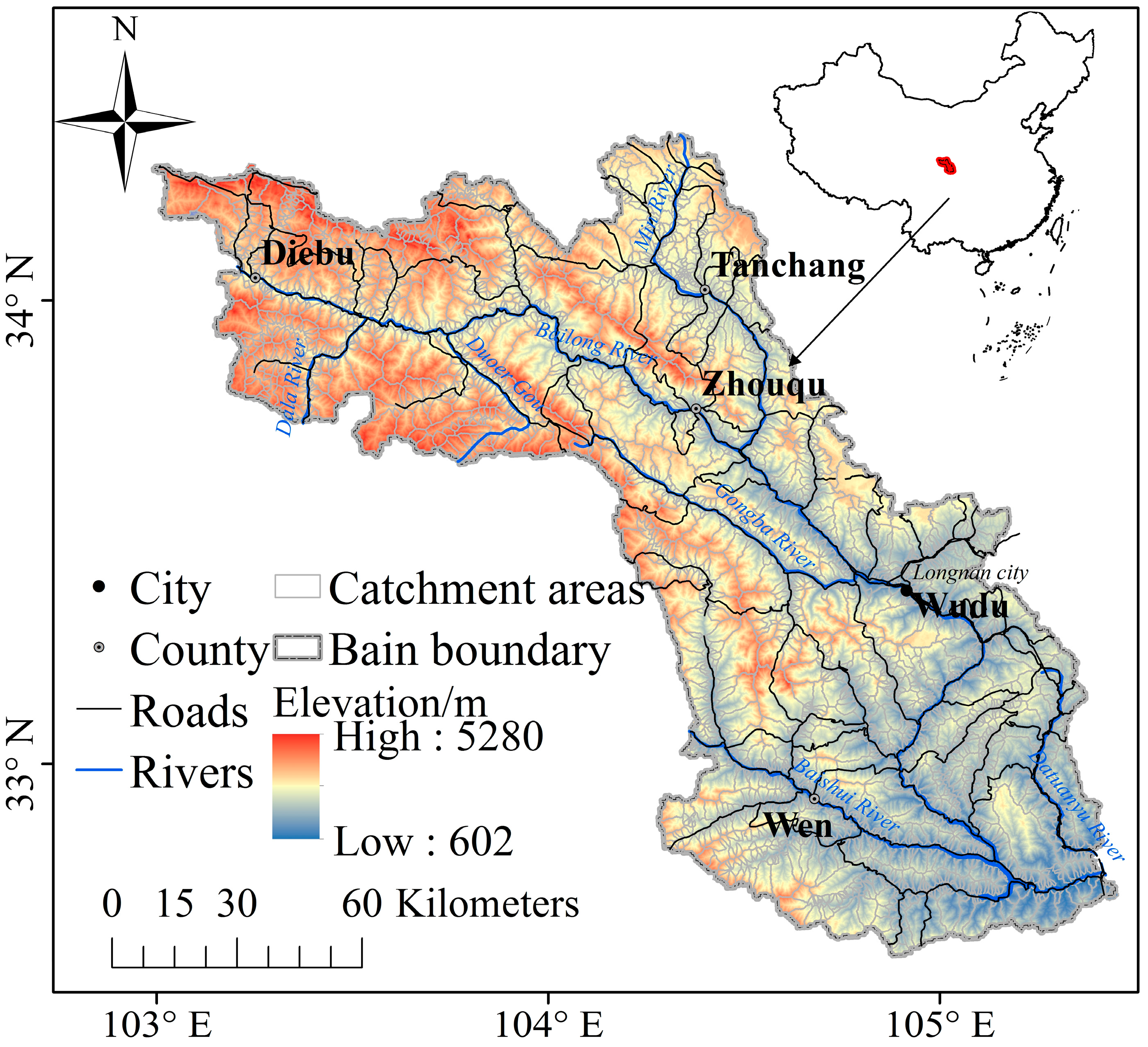

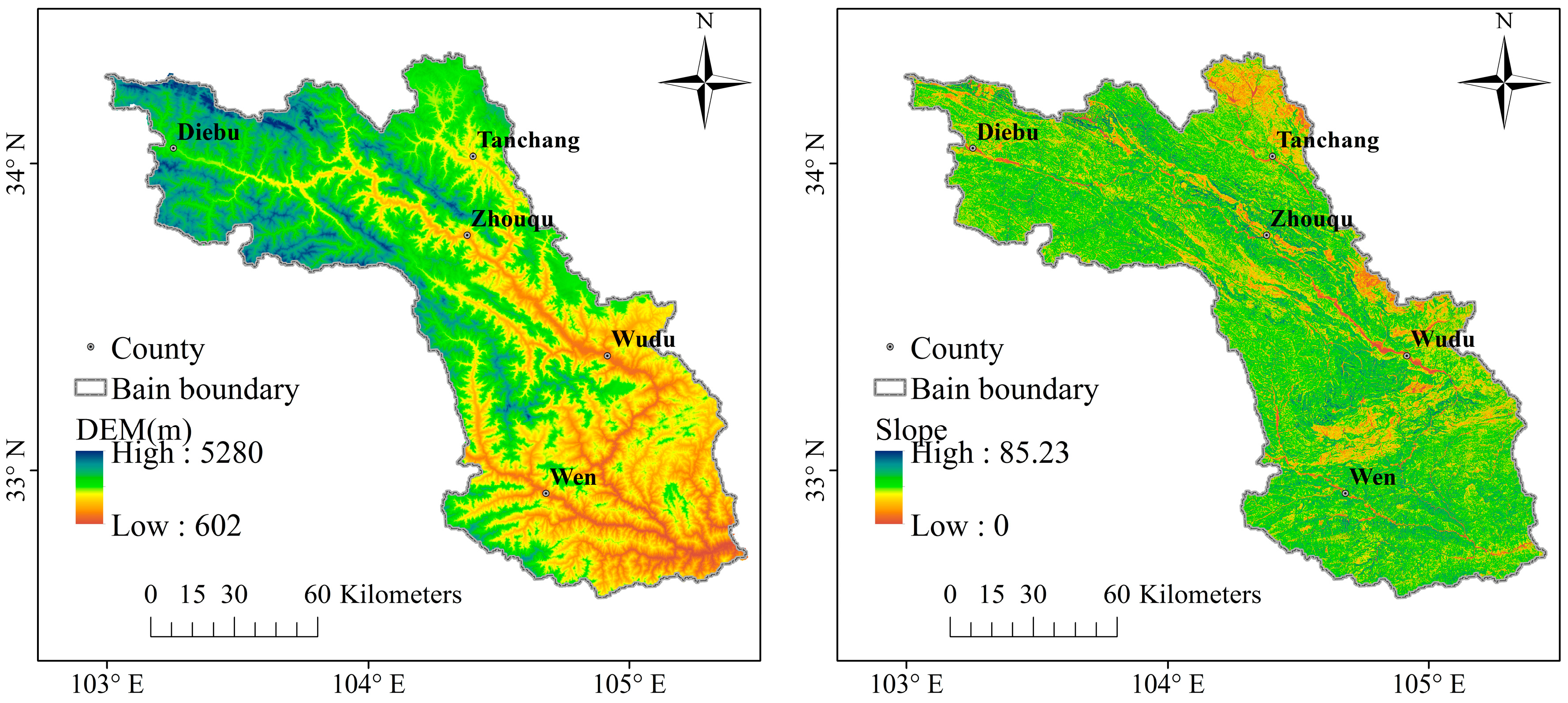
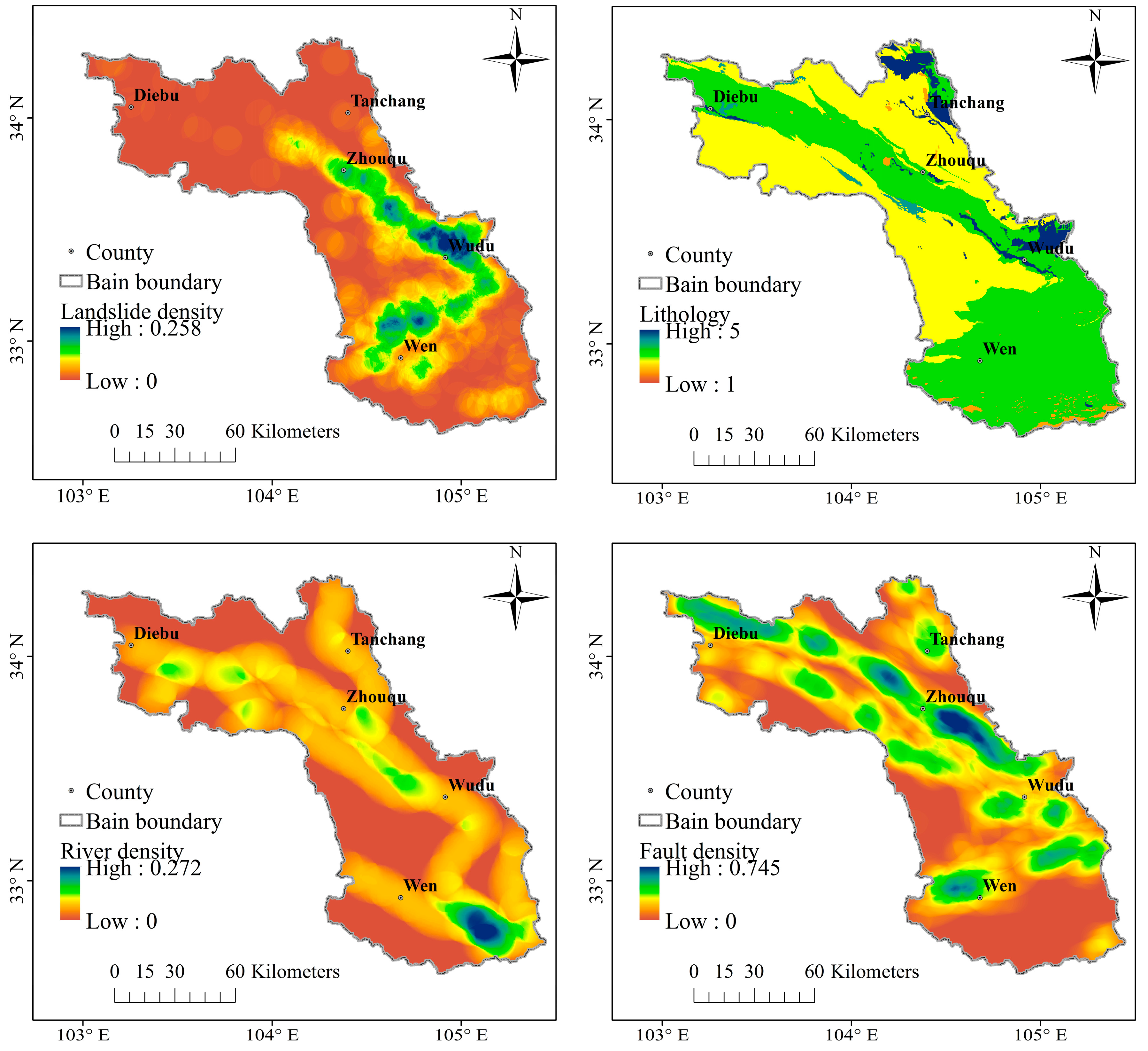
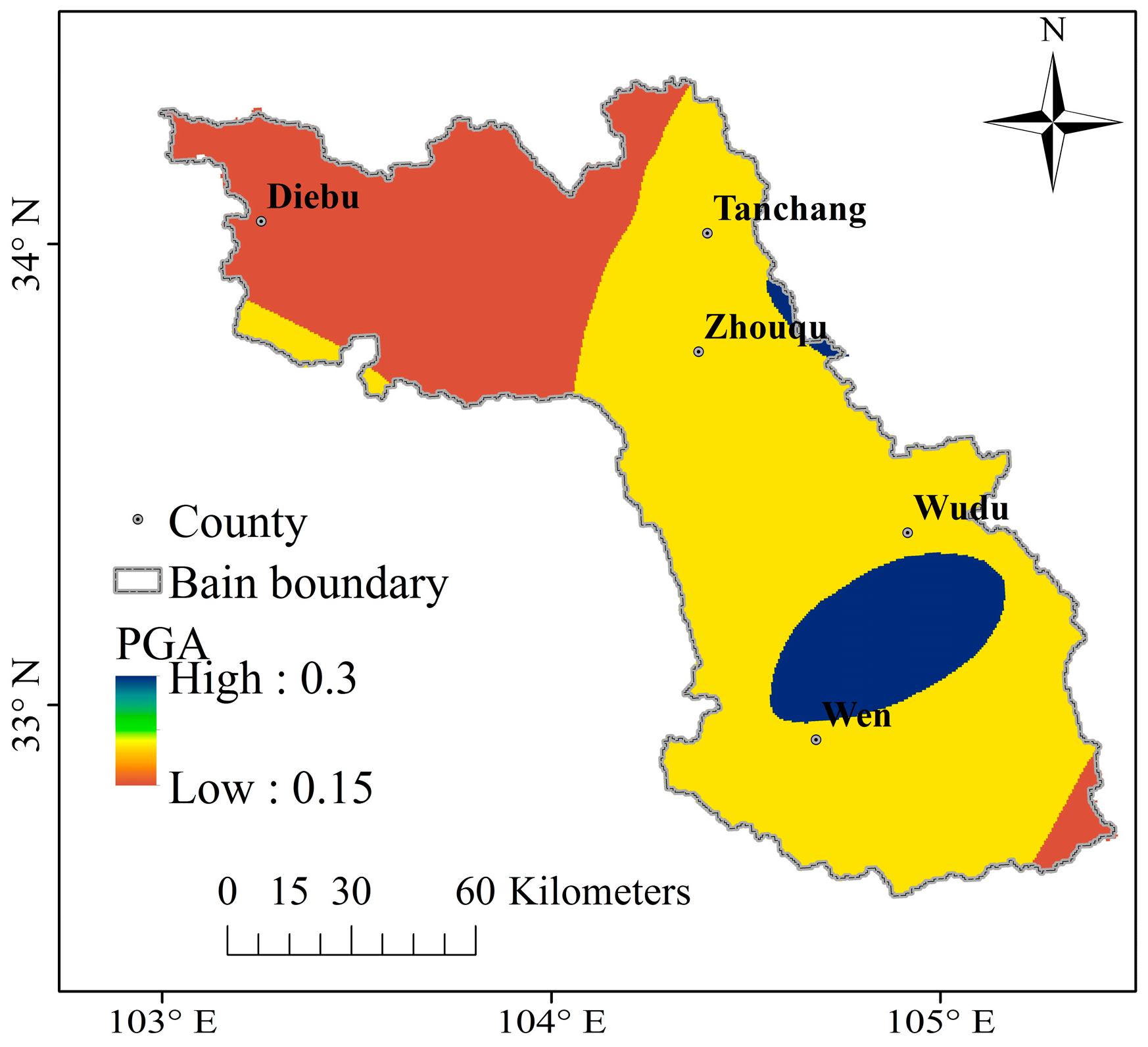
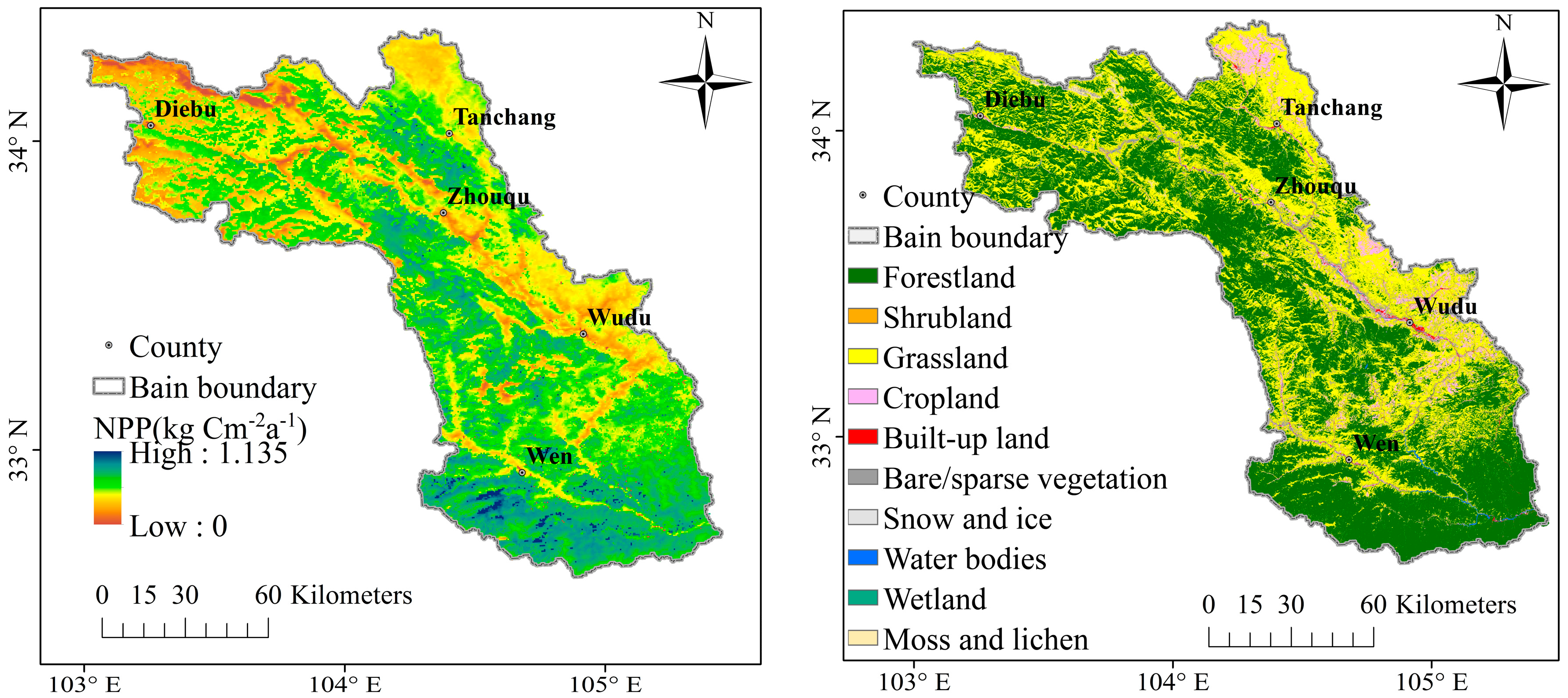
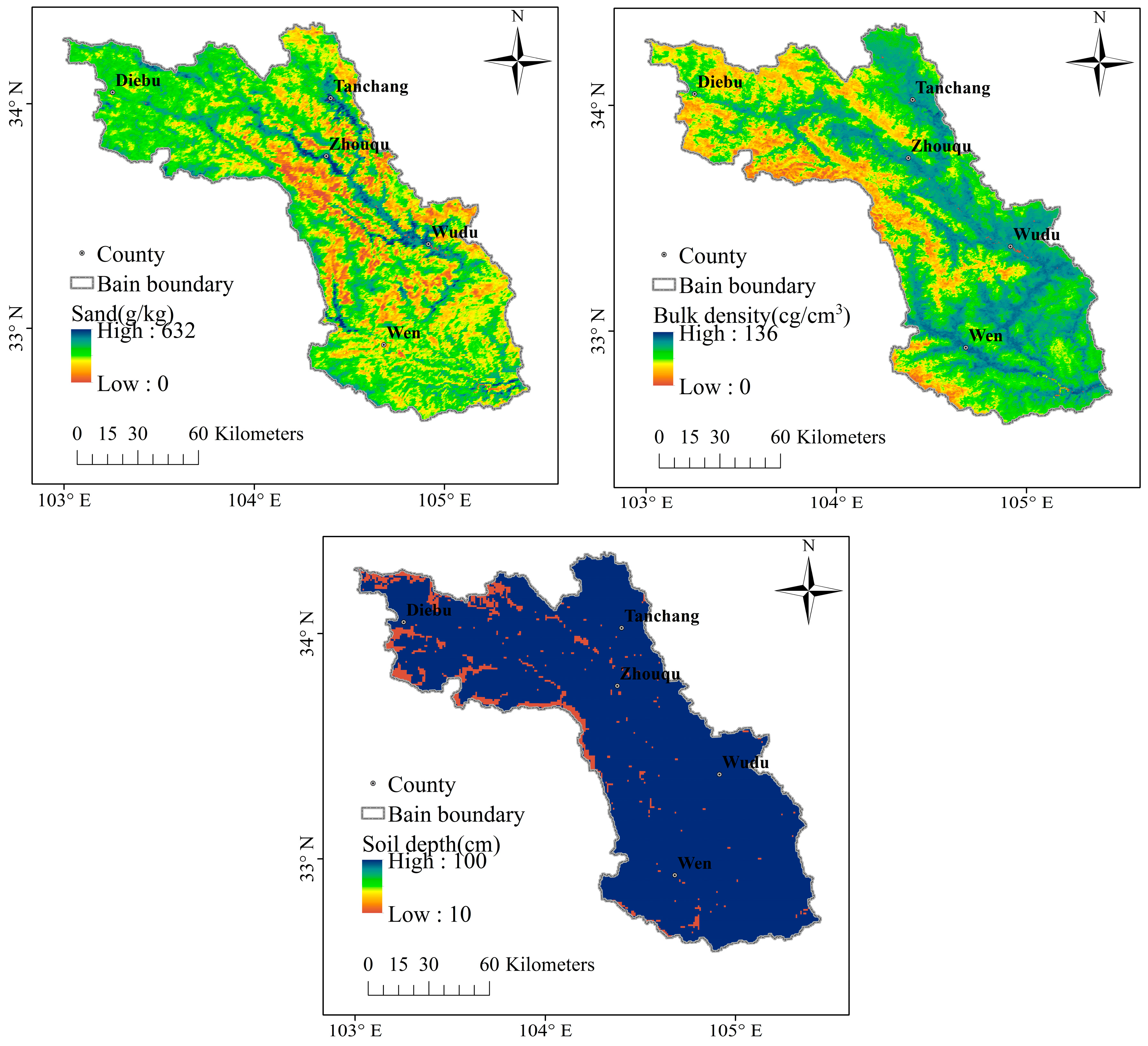
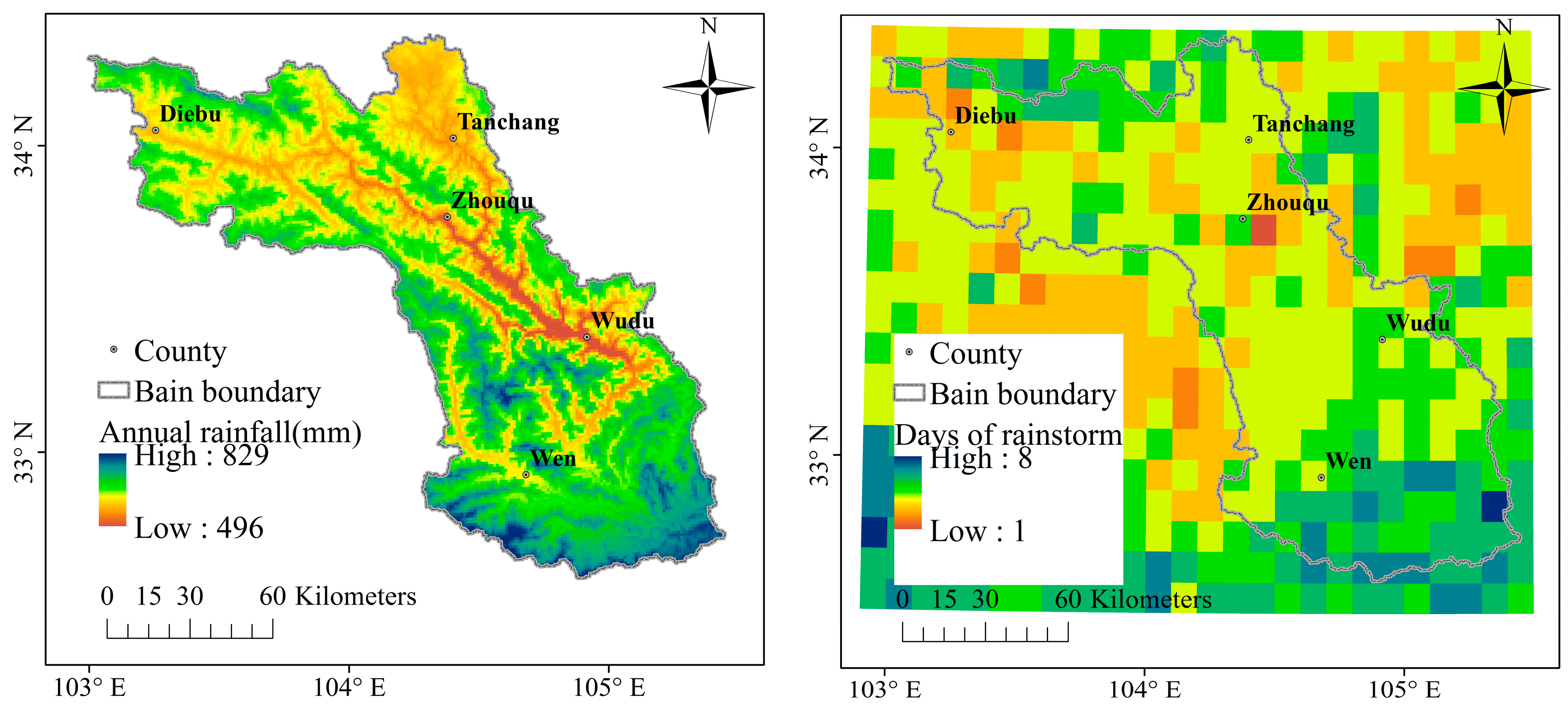
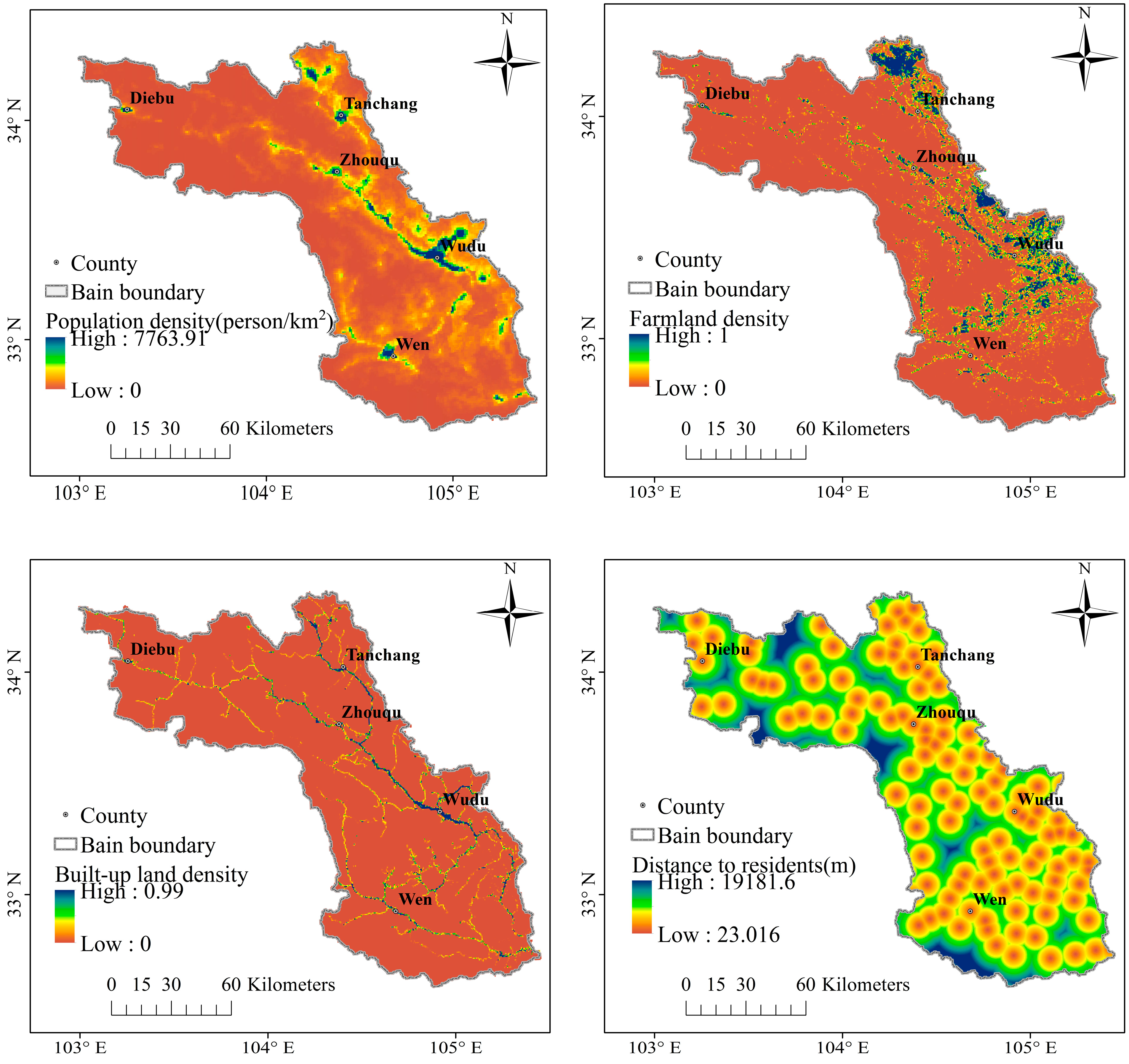

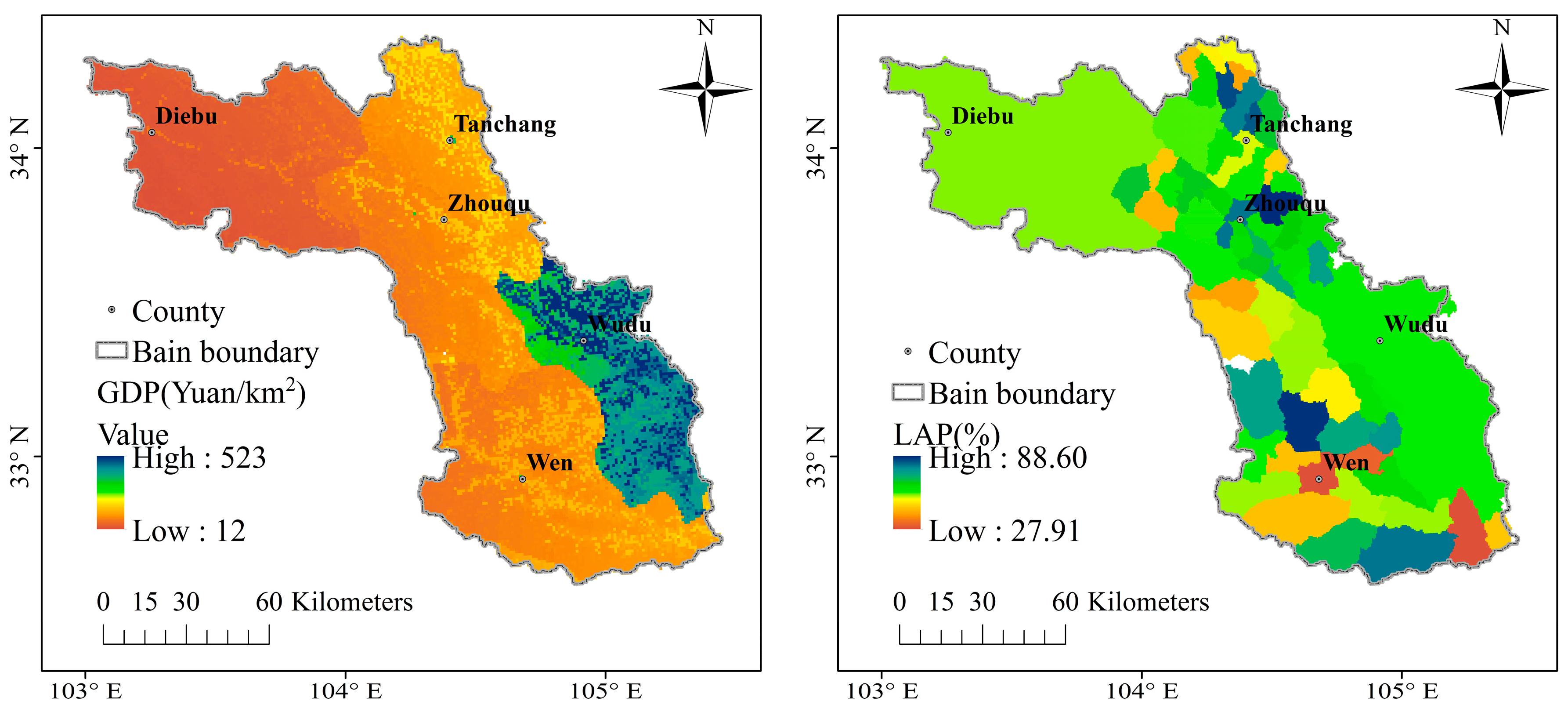
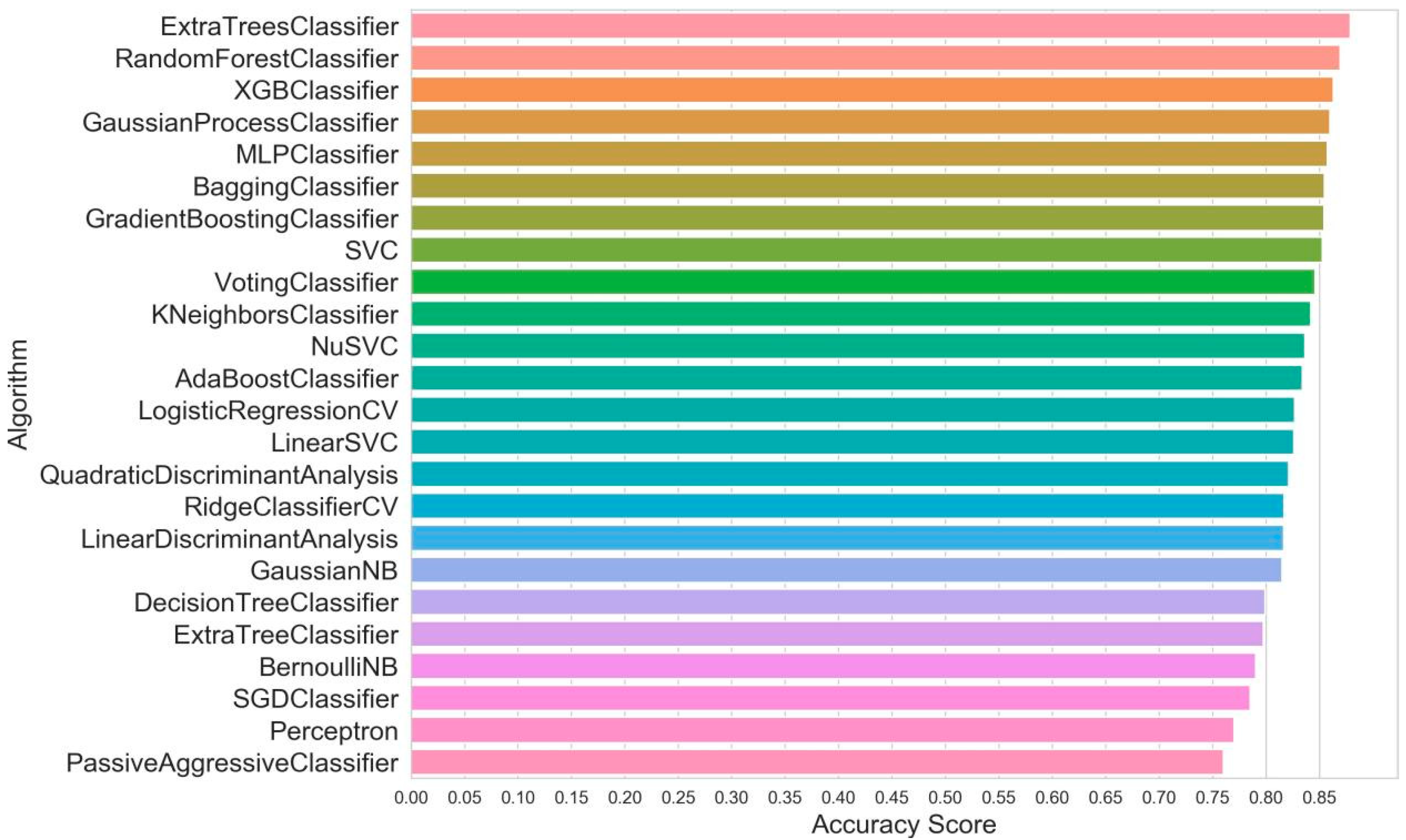
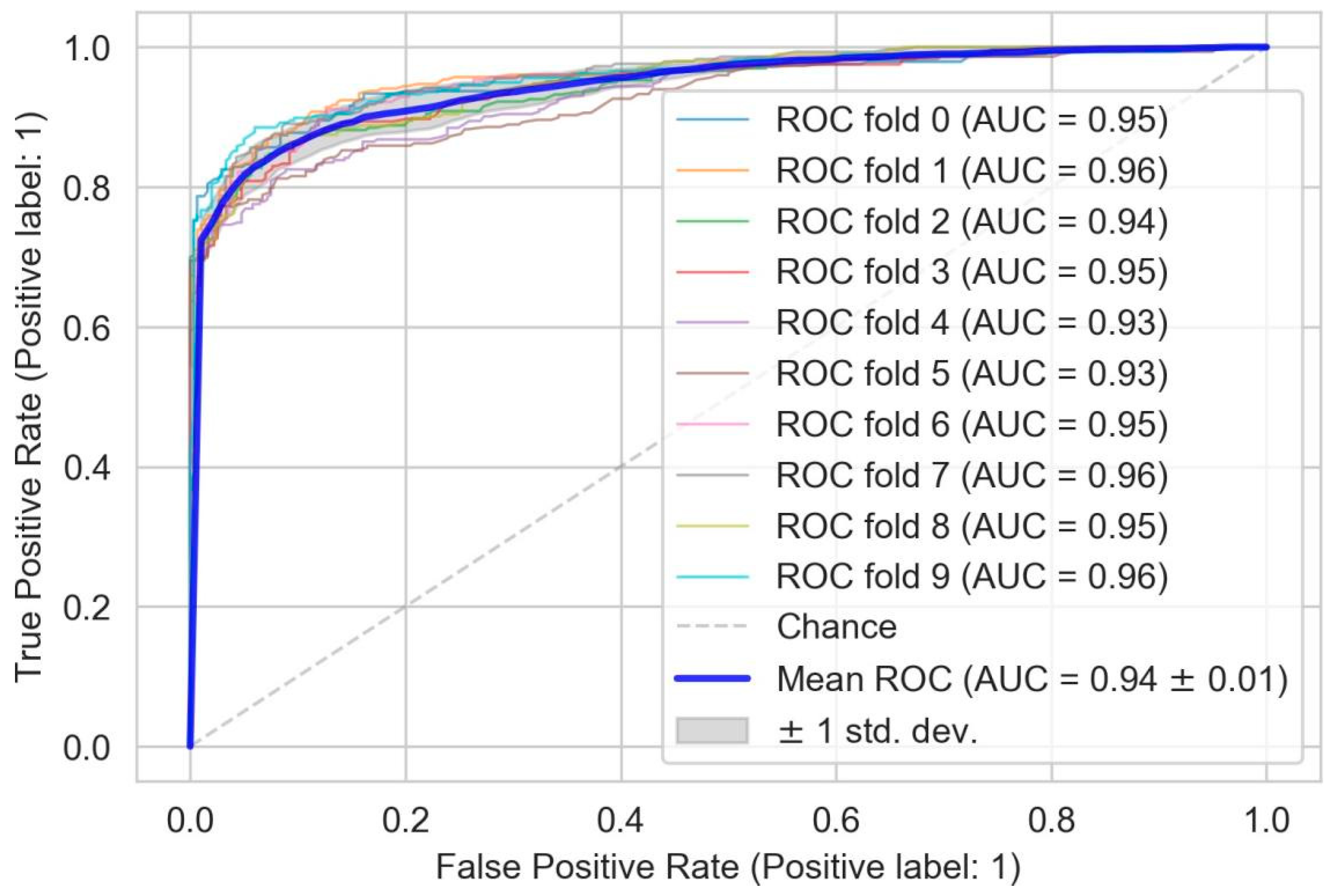
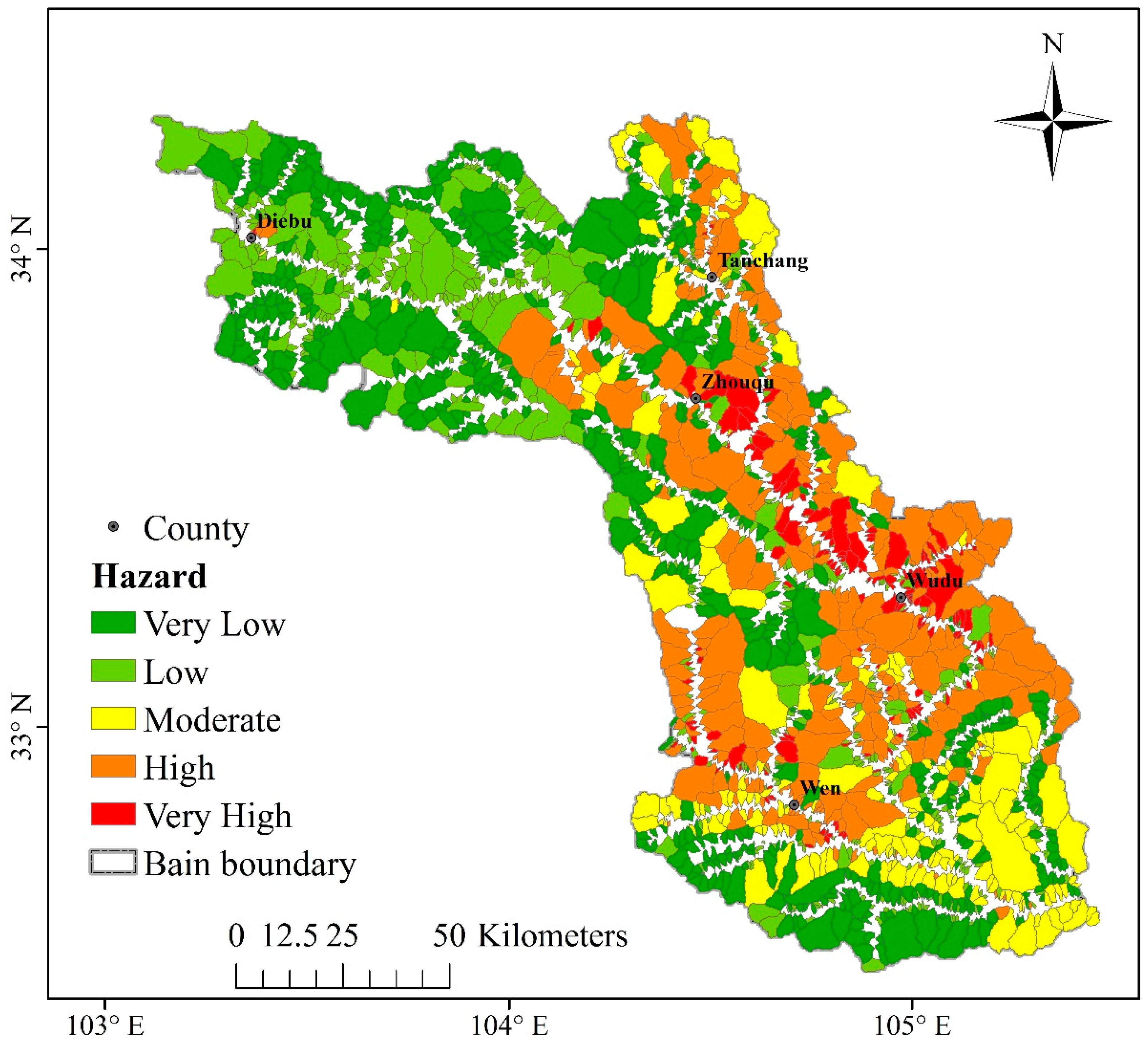
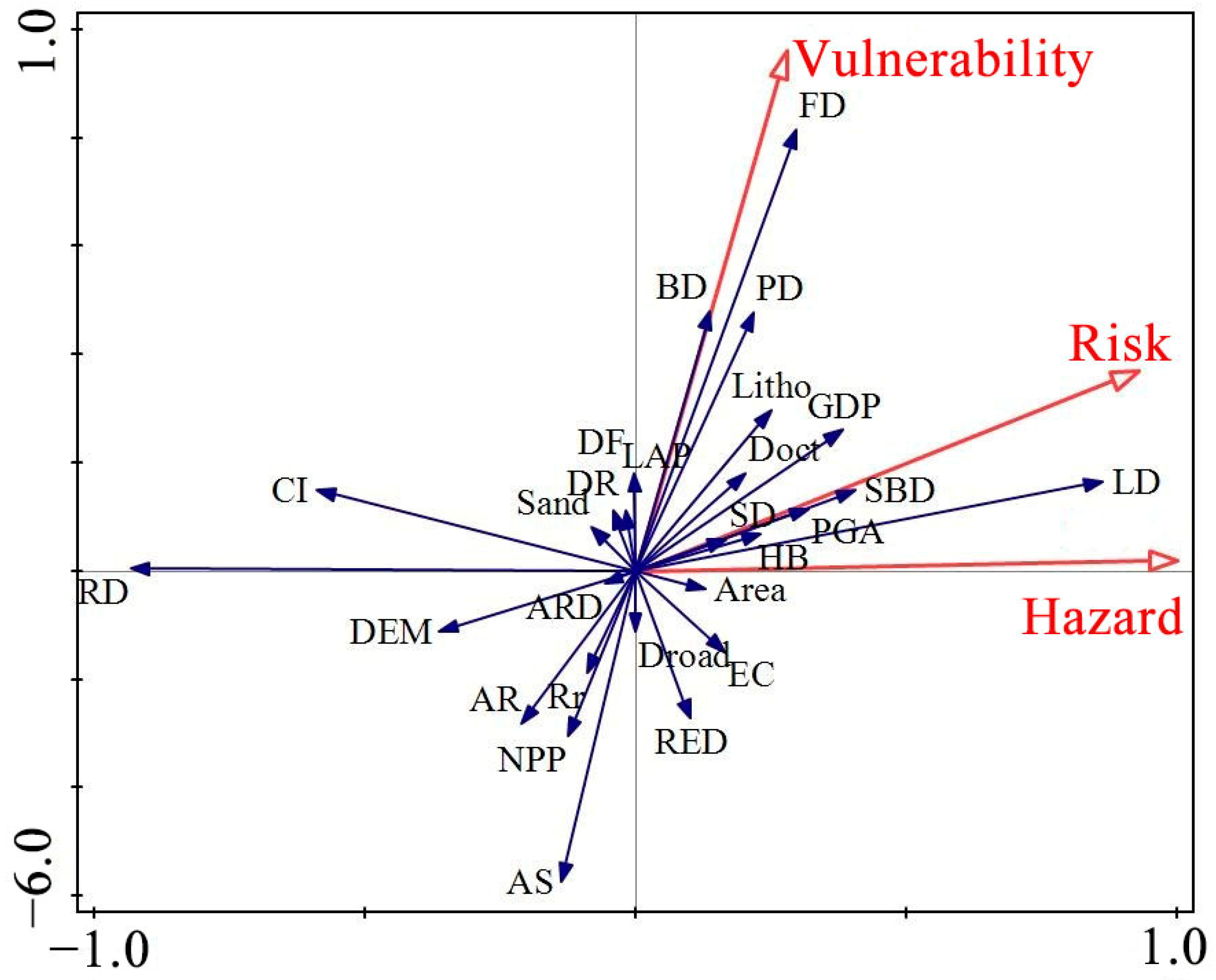

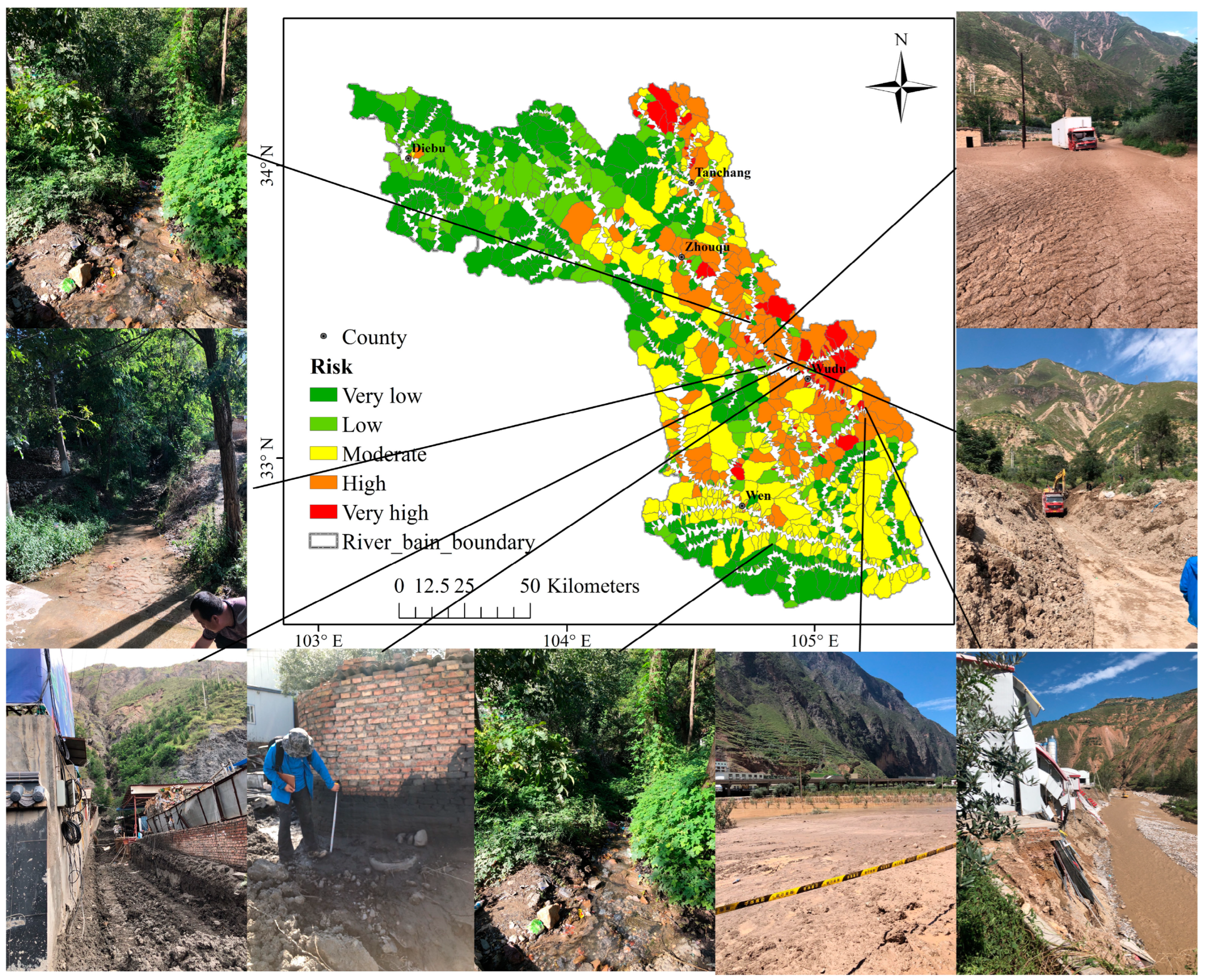
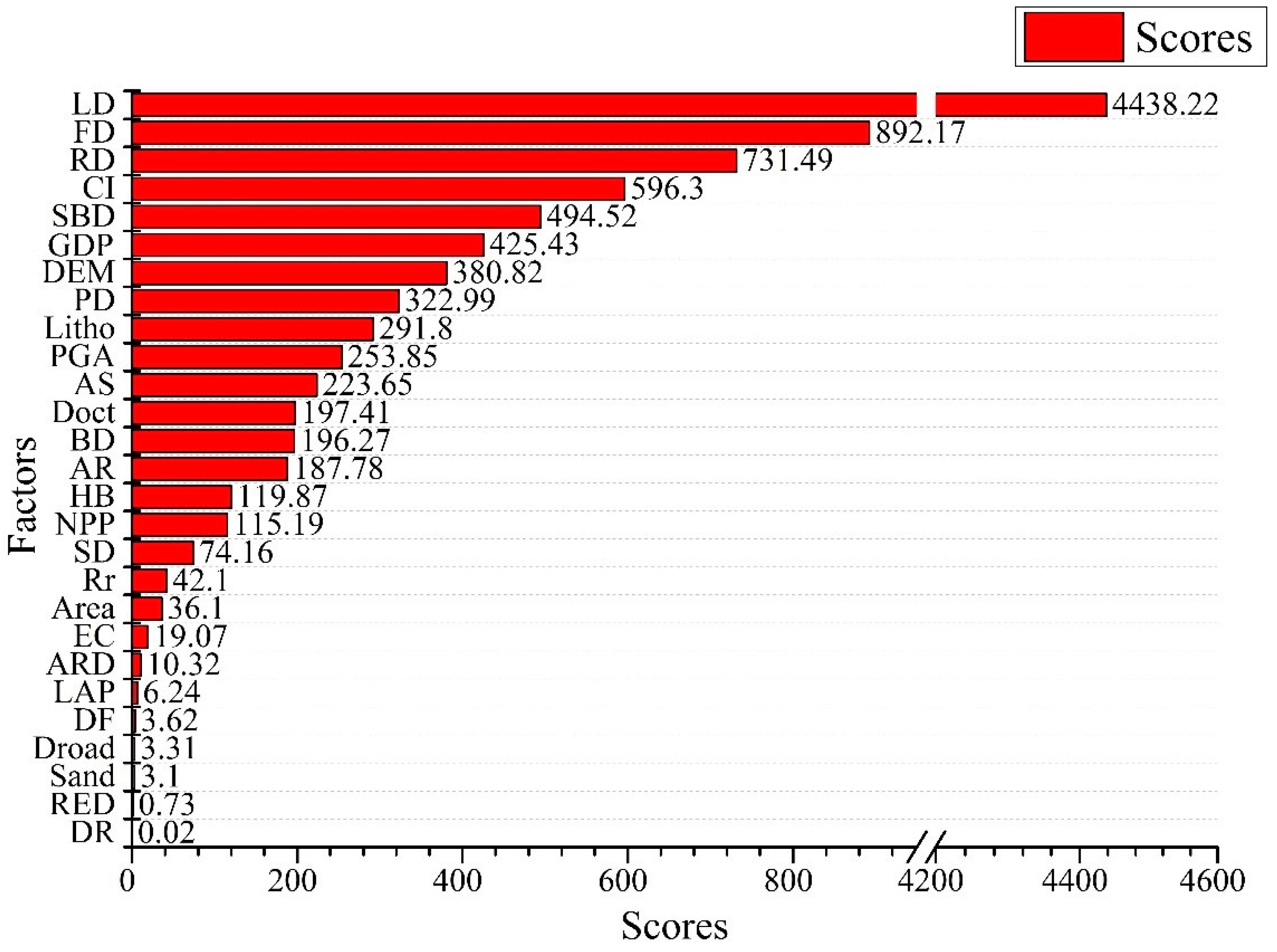
| Risk Assessment | Factors | Sub-Factors | Unit | Description | Scale/Resolution | Soure |
|---|---|---|---|---|---|---|
| Indicators for hazard assessment | Geomorphological conditions | Digital elevation model (DEM) | m | The average elevation of a catchment. | 30 m | Chinese Geospatial Data Cloud (https://www.gscloud.cn/ (accessed on 15 June 2022)) |
| Catchment area (Area) | km2 | The total area of a catchment. | 30 m | DEM | ||
| Relative height difference (RED) | km | The elevation difference in a catchment. | 30 m | DEM | ||
| Average slope (AS) | ° | The average slope of a catchment. | 30 m | DEM | ||
| Relief ratio (Rr) | ° | The ratio of the elevation difference to the length of main channel length. | 30 m | DEM | ||
| Geological structure | Landslide density (LD) | - | The point density of landslide. | 30 m | The landslide distribution data were obtained by the research team through remote sensing image interpretation and field verification. | |
| Lithology (Litho) | - | The hardness and interlayer structure of rocks (Table 2). | Shpfile | 1:200,000 regional geological map | ||
| River density (RD) | - | The linear density of the river. | 30 m | National Gatalogue Service For Geographic Information (https://www.webmap.cn/commres.do?method=result100W (accessed on 15 June 2022))) | ||
| Fault density (DF) | - | The line density of faults. | 30 m | 1:200,000 regional geological map | ||
| Peak ground acceleration (PGA) | g | The average PGA in a catchment. | Shpfile | 1:200,000 regional geological map | ||
| Surface vegetation and soil | Net primary Productivity (NPP) | kg cm−2a−1 | The annual vegetation NPP in a catchment. | 500 m | The MOD17A2H data product from the National Aeronautics and Space Administration (https://ladsweb.modaps.eosdis.nasa.gov (accessed on 15 June 2022)). | |
| Construction land equivalent conversion coefficients (CI) | - | See Table 3 | 30 m | Manual visual interpretation using the ArcGIS platform | ||
| Sand content (Sand) | g/kg | The average percentage of sand in the soil. | 250 m | Soil Grids (https://soilgrids.org/ (accessed on 15 June 2022)). | ||
| Soil depth (SD) | cm | The average soil depth | 250 m | |||
| Soil bulk density (SBD) | cg⋅cm− 3 | The average soil bulk density. | 250 m | |||
| Rain conditions | Annual rainfall (AR) | mm | Annual rainfall at each catchment. | 1000 m | National Earth System Science Data Center (http://www.geodata.cn (accessed on 15 June 2022)). | |
| Days of rainstorm (ARD) | day | Number of days of precipitation greater than 50 mm within 24 h. | 1100 m | Science Data Bank (http://www.doi.org/10.11922/sciencedb.j00001.00290 (accessed on 15 June 2022)). | ||
| Indicators for vulnerability assessment | Exposure | Population density (PD) | persons/km2 | Population per unit area in a catchment. | 1000 m | WorldPop (www.worldpop.org (accessed on 15 June 2022)). |
| Farmland density (FD) | % | Percentage of farmland per unit area in a catchment. | 30 m | Land use data | ||
| Built-up land density (BD) | % | Percentage of built-up land per unit area in a catchment. | 30 m | |||
| Distance to residents (DR) | km | The distance between the catchment point and resident. | 30 m | National Gatalogue Service For Geographic Information (https://www.webmap.cn/commres.do?method=result100W (accessed on 15 June 2022)). | ||
| Coping capacity | Hospital beds per 1000 inhabitants (HB) | beds/1000 persons | The average HB in a catchment. | Shpfile | County Statistical Yearbook | |
| Doctors per 1000 inhabitants (Doct) | persons/1000 persons | The average Doct in a catchment. | Shpfile | |||
| Ecological carrying capacity (EC) | gha | The average EC in a catchment. | 30 m | Land use data | ||
| Distance to road (Droad) | km | The distance between the catchment point and road. | 30 m | National Gatalogue Service For Geographic Information (https://www.webmap.cn/commres.do?method=result100W (accessed on 15 June 2022)). | ||
| Resilience | Gross Domestic Product | Yuan/km2 | The average GDP in a catchment. | 1000 m | Resource and Environment Science and Data Center (https://www.resdc.cn (accessed on 15 June 2022)). | |
| Proportion of Labor -age population (LAP) | % | The average LAP in a catchment. | Shpfile | County Statistical Yearbook. |
| Intensity Classification | Intensity (Mpa) | Strata Lithologic | Value |
|---|---|---|---|
| extremely soft | Quaternary loose material, Neogene detrital rocks, Paleogene detrital rocks | 5 | |
| soft | <5 | Cretaceous detrital rocks | 4 |
| middle | 5–30 | Jurassic detrital rocks, Permian metamorphic rocks, Devonian carbonate rocks, Silurian metamorphic rocks | 3 |
| hard | 30–60 | Triassic and Permian carbonates, Carboniferous carbonates (limestones), Devonian carbonates | 2 |
| extremely hard | >60 | Triassic and Permian intrusive rocks | 1 |
| Land Use Types | Farmland | Shrubland | Forestland | Grassland | Water Bodies | Built-Up Land | Bare Land |
|---|---|---|---|---|---|---|---|
| CI | 0.2 | 0 | 0 | 0 | 0.6 | 1 | 0 |
| Classification | Large (>100 km2) | Medium (10–100 km2) | Small (<10 km2) |
|---|---|---|---|
| Number of catchments | 5 | 384 | 1597 |
| Average risk value | 0.488 | 0.406 | 0.307 |
| Occurrence frequency (times/a) | 1 | 2.67 | 2.14 |
Publisher’s Note: MDPI stays neutral with regard to jurisdictional claims in published maps and institutional affiliations. |
© 2022 by the authors. Licensee MDPI, Basel, Switzerland. This article is an open access article distributed under the terms and conditions of the Creative Commons Attribution (CC BY) license (https://creativecommons.org/licenses/by/4.0/).
Share and Cite
Zhou, Y.; Yue, D.; Liang, G.; Li, S.; Zhao, Y.; Chao, Z.; Meng, X. Risk Assessment of Debris Flow in a Mountain-Basin Area, Western China. Remote Sens. 2022, 14, 2942. https://doi.org/10.3390/rs14122942
Zhou Y, Yue D, Liang G, Li S, Zhao Y, Chao Z, Meng X. Risk Assessment of Debris Flow in a Mountain-Basin Area, Western China. Remote Sensing. 2022; 14(12):2942. https://doi.org/10.3390/rs14122942
Chicago/Turabian StyleZhou, Yanyan, Dongxia Yue, Geng Liang, Shuangying Li, Yan Zhao, Zengzu Chao, and Xingmin Meng. 2022. "Risk Assessment of Debris Flow in a Mountain-Basin Area, Western China" Remote Sensing 14, no. 12: 2942. https://doi.org/10.3390/rs14122942








